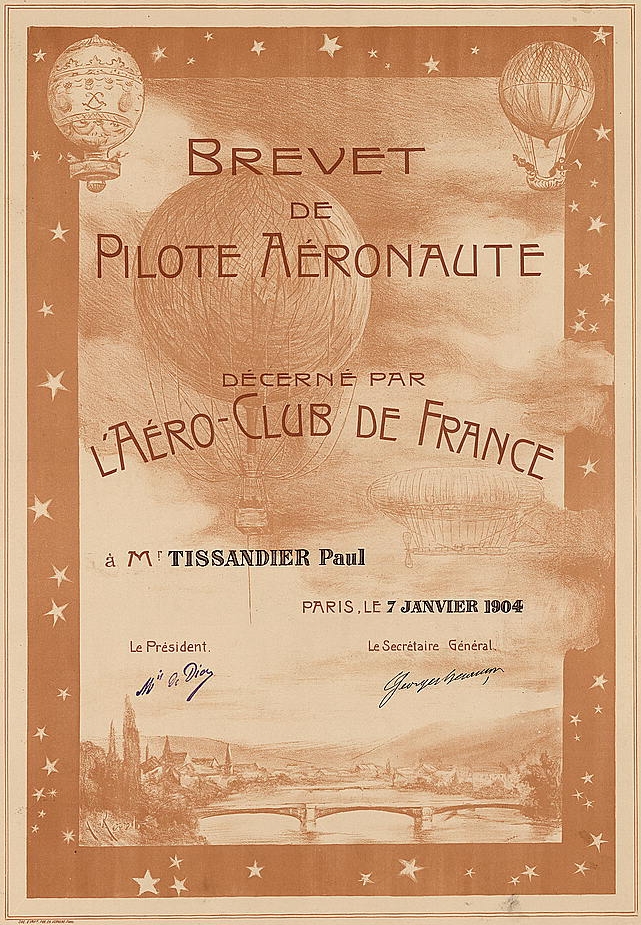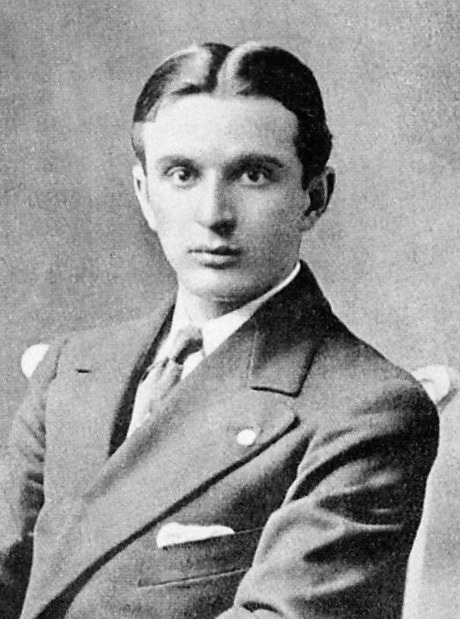|
Juan Bielovucic
Juan Bielovucic (30 July 1889 – 14 January 1949) was a Peruvian aviator of Croatian and French descent who set several speed and altitude aviation records in 1910–13. He was also the first person to complete a successful powered aircraft crossing of the Alps in 1913, following a 1910 attempt by his friend Jorge Chávez that ended in a fatal crash landing. He established the first aviation school in South America in Lima, Peru. Bielovucic became a colonel of the Peruvian Aviation Corps (PAC) in 1911, joined the '' Service Aéronautique'' of the French Army as a volunteer in 1914 and earned the Legion of Honour for his service in World War I. He retired from active aviation in 1920 and returned to Peru where he became the lieutenant commander of the PAC Reserve. He was also active with the French Resistance during World War II. In Croatia, he is regarded as the first Croatian aviator. Early life Juan Bielovucic was born on 30 July 1889 in Lima, Peru to Croat father Miho Bjel ... [...More Info...] [...Related Items...] OR: [Wikipedia] [Google] [Baidu] |
Lima
Lima ( ; ), originally founded as Ciudad de Los Reyes (City of The Kings) is the capital and the largest city of Peru. It is located in the valleys of the Chillón River, Chillón, Rímac River, Rímac and Lurín Rivers, in the desert zone of the central coastal part of the country, overlooking the Pacific Ocean. Together with the seaside city of Callao, it forms a contiguous urban area known as the Lima Metropolitan Area. With a population of more than 9.7 million in its urban area and more than 10.7 million in its metropolitan area, Lima is one of the largest cities in the Americas. Lima was named by natives in the agricultural region known by native Peruvians as ''Limaq''. It became the capital and most important city in the Viceroyalty of Peru. Following the Peruvian War of Independence, it became the capital of the Republic of Peru (República del Perú). Around one-third of the national population now lives in its Lima Metropolitan Area, metropolitan area. The city of Li ... [...More Info...] [...Related Items...] OR: [Wikipedia] [Google] [Baidu] |
Crash Landing
An emergency landing is a premature landing made by an aircraft in response to an emergency involving an imminent or ongoing threat to the safety and operation of the aircraft, or involving a sudden need for a passenger or crew on board to terminate the flight (such as a medical emergency). It typically involves a forced diversion to the nearest or most suitable airport or airbase, or an off airport landing or ditching if the flight cannot reach an airfield. Flights under air traffic control will be given priority over all other aircraft operations upon the declaration of the emergency. Types There are several different types of emergency landings for powered aircraft: planned landing or unplanned landing. * ''Forced landing'' – the aircraft is forced to make a landing due to technical problems. Landing as soon as possible is a priority, no matter where, since a major system failure has occurred or is imminent. It is caused by the failure of or damage to vital systems such ... [...More Info...] [...Related Items...] OR: [Wikipedia] [Google] [Baidu] |
Aéro-Club De France
The Aéro-Club de France () was founded as the Aéro-Club on 20 October 1898 as a society 'to encourage aerial locomotion' by Ernest Archdeacon, Léon Serpollet, Henri de la Valette, Jules Verne and his wife, André Michelin, Albert de Dion, Alberto Santos-Dumont, Henri Deutsch de la Meurthe, and Henry de La Vaulx. On 20 April 1909, its name was changed to ''Aéro-Club de France''. The Aéro-Club de France originally set many of the regulations that controlled aviation in France. From its formation it also set the rules that have marked some of the 'firsts' in aviation, such as the first closed-circuit flight of over 1 km and the first helicopter flight, and has organised competitions including: * the Prix Deutsch de la Meurthe, a challenge for dirigibles from 1901 * the Gordon Bennett Cup for fixed-wing aircraft in 1909 The club published the journal ''L'Aérophile'' from 1898 to 1947, and since 1997 publishes the magazine ''Aérofrance''. The Aéro-Club de France was ... [...More Info...] [...Related Items...] OR: [Wikipedia] [Google] [Baidu] |
Voisin (aircraft)
Aéroplanes Voisin was a French aircraft manufacturing company established in 1905 by Gabriel Voisin and his brother Charles, and was continued by Gabriel after Charles died in an automobile accident in 1912; the full official company name then became ''Société Anonyme des Aéroplanes G. Voisin''Gunston, 1993, says the full name was "Aéroplanes G. Voisin". On the other hand the avions-voisin.org webpage specifies the name as "Société Aéroplanes Voisin, Société Anonyme". ( en, Aeroplanes Voisin public limited company). During World War I, it was a major producer of military aircraft, notably the Voisin III. After the war Gabriel Voisin abandoned the aviation industry, and set up a company to design and produce luxury automobiles, called Avions Voisin. Early History Gabriel Voisin had been employed by Ernest Archdeacon to work on the construction of gliders and then entered into partnership with Louis Blériot, to form the company ''Ateliers d' Aviation Edouard Surcou ... [...More Info...] [...Related Items...] OR: [Wikipedia] [Google] [Baidu] |
Dubrovnik
Dubrovnik (), historically known as Ragusa (; see notes on naming), is a city on the Adriatic Sea in the region of Dalmatia, in the southeastern semi-exclave of Croatia. It is one of the most prominent tourist destinations in the Mediterranean, a seaport and the centre of the Dubrovnik-Neretva County. Its total population is 42,615 (2011 census). In 1979, the city of Dubrovnik was added to the UNESCO list of World Heritage Sites in recognition of its outstanding medieval architecture and fortified old town. The history of the city probably dates back to the 7th century, when the town known as was founded by refugees from Epidaurum (). It was under the protection of the Byzantine Empire and later under the sovereignty of the Republic of Venice. Between the 14th and 19th centuries, Dubrovnik ruled itself as a free state. The prosperity of the city was historically based on maritime trade; as the capital of the maritime Republic of Ragusa, it achieved a high level of develo ... [...More Info...] [...Related Items...] OR: [Wikipedia] [Google] [Baidu] |
Rijeka Dubrovačka
Rijeka Dubrovačka (Italian: ''Val d'Ombla'') is a ria (coastal inlet) to the north of Dubrovnik, Croatia, on the coast of the Adriatic Sea. The Ombla The Ombla is a short river in Croatia, northeast of Dubrovnik. Its course is approximately long, and it empties into the Rijeka Dubrovačka, ria formed by the Adriatic Sea near Komolac in Dubrovnik-Neretva County. Rijeka Dubrovačka is actually ... river flows into Rijeka Dubrovačka. The Franjo Tuđman Bridge spans it, carrying the D8 state road. References External links Landforms of Dubrovnik-Neretva County Bodies of water of Croatia Inlets of Europe {{Croatia-geo-stub ... [...More Info...] [...Related Items...] OR: [Wikipedia] [Google] [Baidu] |
Mokošica
Mokošica is a district in the city of Dubrovnik in Croatia. The suburb consists of Old (''Mokošica'') and New Mokošica (''Nova Mokošica''). At the 2011 census, it had a population of 7,940. It is considered one of the most densely populated urban districts in Croatia. Name Mokošica was named after Mokosh, the goddess of fertility and protector of women in Slavic mythology. Geographical location Mokošica is the first major western suburban town of Dubrovnik (7 km from Dubrovnik). It is located just above the Adriatic Highway which leads to Split. From the north and east it is surrounded by the high mountains of the Dalmatian coast. Towards the north lies the slopes of Golubov Kamen Hill. History From the 16th century onwards Mokošica was the summer location for the citizens of Dubrovnik (Houses of Bona, Zuzorić, Ragnina and Giorgi). The most important building is Gozze-Giorgi (Sabino Giorgi) villa where, in 1814, the council met for the last time to restore the ... [...More Info...] [...Related Items...] OR: [Wikipedia] [Google] [Baidu] |
Croat
The Croats (; hr, Hrvati ) are a South Slavic ethnic group who share a common Croatian ancestry, culture, history and language. They are also a recognized minority in a number of neighboring countries, namely Austria, the Czech Republic, Germany, Hungary, Italy, Montenegro, Romania, Serbia, Slovakia and Slovenia. Due to political, social and economic reasons, many Croats migrated to North and South America as well as New Zealand and later Australia, establishing a diaspora in the aftermath of World War II, with grassroots assistance from earlier communities and the Roman Catholic Church. In Croatia (the nation state), 3.9 million people identify themselves as Croats, and constitute about 90.4% of the population. Another 553,000 live in Bosnia and Herzegovina, where they are one of the three constituent ethnic groups, predominantly living in Western Herzegovina, Central Bosnia and Bosnian Posavina. The minority in Serbia number about 70,000, mostly in Vojvodina. The et ... [...More Info...] [...Related Items...] OR: [Wikipedia] [Google] [Baidu] |
Juan Bielovucic
Juan Bielovucic (30 July 1889 – 14 January 1949) was a Peruvian aviator of Croatian and French descent who set several speed and altitude aviation records in 1910–13. He was also the first person to complete a successful powered aircraft crossing of the Alps in 1913, following a 1910 attempt by his friend Jorge Chávez that ended in a fatal crash landing. He established the first aviation school in South America in Lima, Peru. Bielovucic became a colonel of the Peruvian Aviation Corps (PAC) in 1911, joined the '' Service Aéronautique'' of the French Army as a volunteer in 1914 and earned the Legion of Honour for his service in World War I. He retired from active aviation in 1920 and returned to Peru where he became the lieutenant commander of the PAC Reserve. He was also active with the French Resistance during World War II. In Croatia, he is regarded as the first Croatian aviator. Early life Juan Bielovucic was born on 30 July 1889 in Lima, Peru to Croat father Miho Bjel ... [...More Info...] [...Related Items...] OR: [Wikipedia] [Google] [Baidu] |
Croatia
, image_flag = Flag of Croatia.svg , image_coat = Coat of arms of Croatia.svg , anthem = "Lijepa naša domovino"("Our Beautiful Homeland") , image_map = , map_caption = , capital = Zagreb , coordinates = , largest_city = capital , official_languages = Croatian , languages_type = Writing system , languages = Latin , ethnic_groups = , ethnic_groups_year = 2021 , religion = , religion_year = 2021 , demonym = , government_type = Unitary parliamentary republic , leader_title1 = President , leader_name1 = Zoran Milanović , leader_title2 = Prime Minister , leader_name2 = Andrej Plenković , leader_title3 = Speaker of Parliament , leader_name3 = Gordan Jandroković , legislature = Sabor , sovereignty_type ... [...More Info...] [...Related Items...] OR: [Wikipedia] [Google] [Baidu] |
World War II
World War II or the Second World War, often abbreviated as WWII or WW2, was a world war that lasted from 1939 to 1945. It involved the vast majority of the world's countries—including all of the great powers—forming two opposing military alliances: the Allies and the Axis powers. World War II was a total war that directly involved more than 100 million personnel from more than 30 countries. The major participants in the war threw their entire economic, industrial, and scientific capabilities behind the war effort, blurring the distinction between civilian and military resources. Aircraft played a major role in the conflict, enabling the strategic bombing of population centres and deploying the only two nuclear weapons ever used in war. World War II was by far the deadliest conflict in human history; it resulted in 70 to 85 million fatalities, mostly among civilians. Tens of millions died due to genocides (including the Holocaust), starvation, ma ... [...More Info...] [...Related Items...] OR: [Wikipedia] [Google] [Baidu] |

%2C_Guamán_Poma%2C_1616.jpg)




.png)

